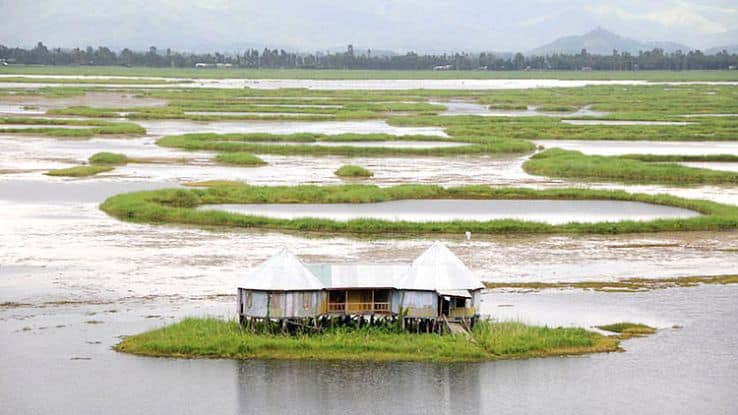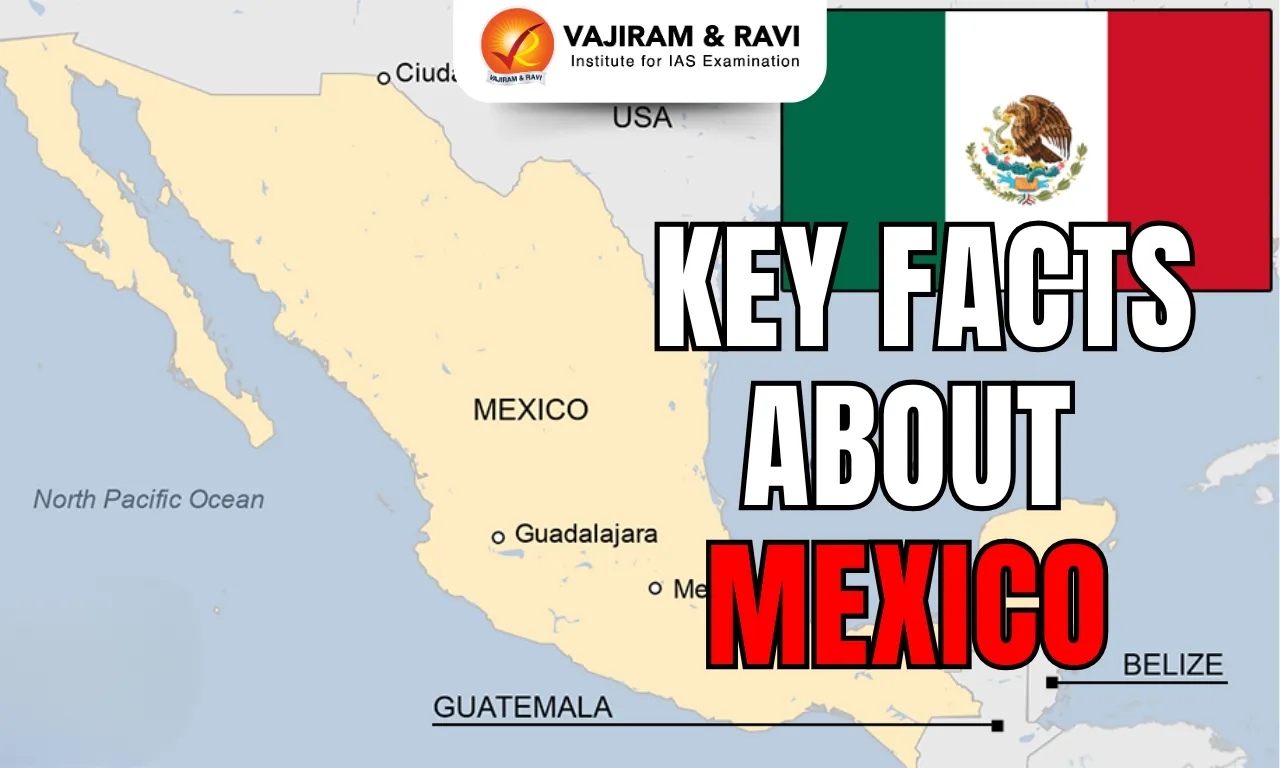About Keibul Lamjao National Park:
- It is the world’s only floating national park.
- Location:
- It is located in the Bishnupur district in Manipur.
- The park is located in the southwestern part of the famous Loktak Lake, which is well known for the floating biomass called phumdis.
- This is the last natural habitat of the endangered brow-antlered deer(Sangai deer), the dancing deer of Manipur.
- Vegetation: The park is a combination of wetland, terrestrial and aquatic ecosystems.
- Flora:
- It comprises of Saccharum munja (Khoimom), Zizania latifolia (Wild Rice) (Ishing kambong), Eiranthus procerus (Singnang), S. bengalensis, Cynodon dactylon (Tinthou), Discorea bulbifera (Phumha) etc.
- Another kind of aquatic flora, phumdis, can be found in two types phumdi aruppa (sinking) and phumdi ataoba (floating).
- Fauna: Includes Wild boar, Hog deer, common otter, Large Indian jungle cat, fox, Bay bamboo rat, golden cat, etc.
Key Facts about Sangai deer:
- Scientific Name: Rucervus eldii
- Common Name: Sangai, Brow antlered deer, Dancing Deer.
- Habitat and Distribution: It is found only in Keibul Lamjao National Park.
- Features:
- It is a medium-sized deer, with uniquely distinctive antlers, with extremely long brow tine, which forms the main beam.
- It has a dark reddish-brown winter coat, which turns paler in summer.
- Conservation Status:
- Wildlife (Protection) Act, 1972: Schedule-1
- IUCN Red List: Endangered
Key Facts about Loktak Lake:
- It is the largest freshwater lake in Northeast India.
- It is famous for the phumdis floating over it.
- It was designated as a wetland of international importance under the Ramsar Convention in 1990.
- It is also listed under the Montreux Record in 1993, “a record of Ramsar sites where changes in ecological character have occurred, are occurring or are likely to occur”.
Q1) What is Montreux Record?
The Montreux Record is a register of wetland sites on the List of Wetlands of International Importance where changes in ecological character have occurred, are occurring, or are likely to occur as a result of technological developments, pollution or other human interference. It is maintained as part of the Ramsar List.
Last updated on December, 2025
→ Check out the latest UPSC Syllabus 2026 here.
→ Join Vajiram & Ravi’s Interview Guidance Programme for expert help to crack your final UPSC stage.
→ UPSC Mains Result 2025 is now out.
→ UPSC Notification 2026 is scheduled to be released on January 14, 2026.
→ UPSC Calendar 2026 is released on 15th May, 2025.
→ The UPSC Vacancy 2025 were released 1129, out of which 979 were for UPSC CSE and remaining 150 are for UPSC IFoS.
→ UPSC Prelims 2026 will be conducted on 24th May, 2026 & UPSC Mains 2026 will be conducted on 21st August 2026.
→ The UPSC Selection Process is of 3 stages-Prelims, Mains and Interview.
→ UPSC Result 2024 is released with latest UPSC Marksheet 2024. Check Now!
→ UPSC Prelims Result 2025 is out now for the CSE held on 25 May 2025.
→ UPSC Toppers List 2024 is released now. Shakti Dubey is UPSC AIR 1 2024 Topper.
→ UPSC Prelims Question Paper 2025 and Unofficial Prelims Answer Key 2025 are available now.
→ UPSC Mains Question Paper 2025 is out for Essay, GS 1, 2, 3 & GS 4.
→ UPSC Mains Indian Language Question Paper 2025 is now out.
→ UPSC Mains Optional Question Paper 2025 is now out.
→ Also check Best IAS Coaching in Delhi

















